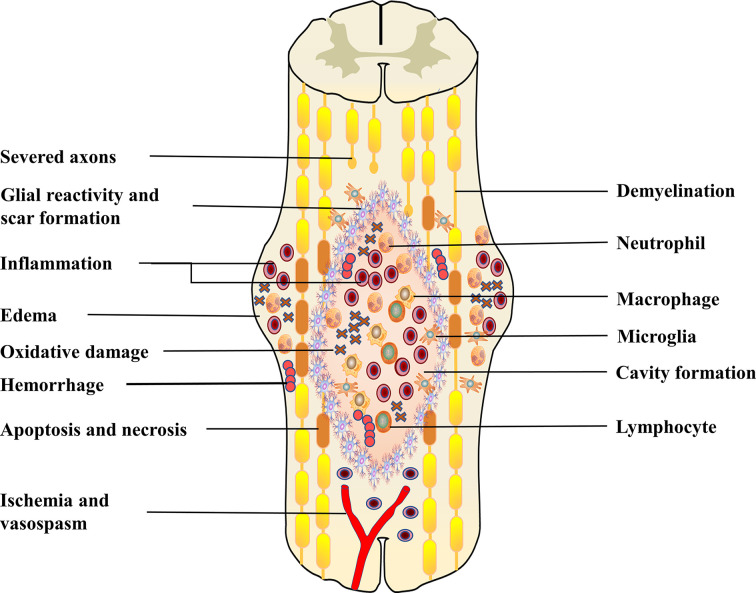Figure 1.
This figure shows the combination of pathophysiological events that occur post-SCI. This includes hemorrhage, oedema, inflammation, apoptosis, necrosis, oxidative damage, ischemia and vasospasm. Following primary injury, resident cells (astrocytes, microglia) are immediately activated and migrate to the site of injury. Subsequently, peripheral inflammatory cells, including neutrophils, macrophages and lymphocytes, infiltrate into the center of the damaged spinal cord. These activated immune cells can exacerbate the injury, causing neuronal death, which leads to axonal demyelination and disruption of synaptic transmission. In the subacute phase, fluid-filled cavities form in the center of the spinal cord. Astrocytes form a glial scar to isolate the damaged area. These sustained pathophysiological changes eventually lead to severe dysfunction below the damaged segment.

